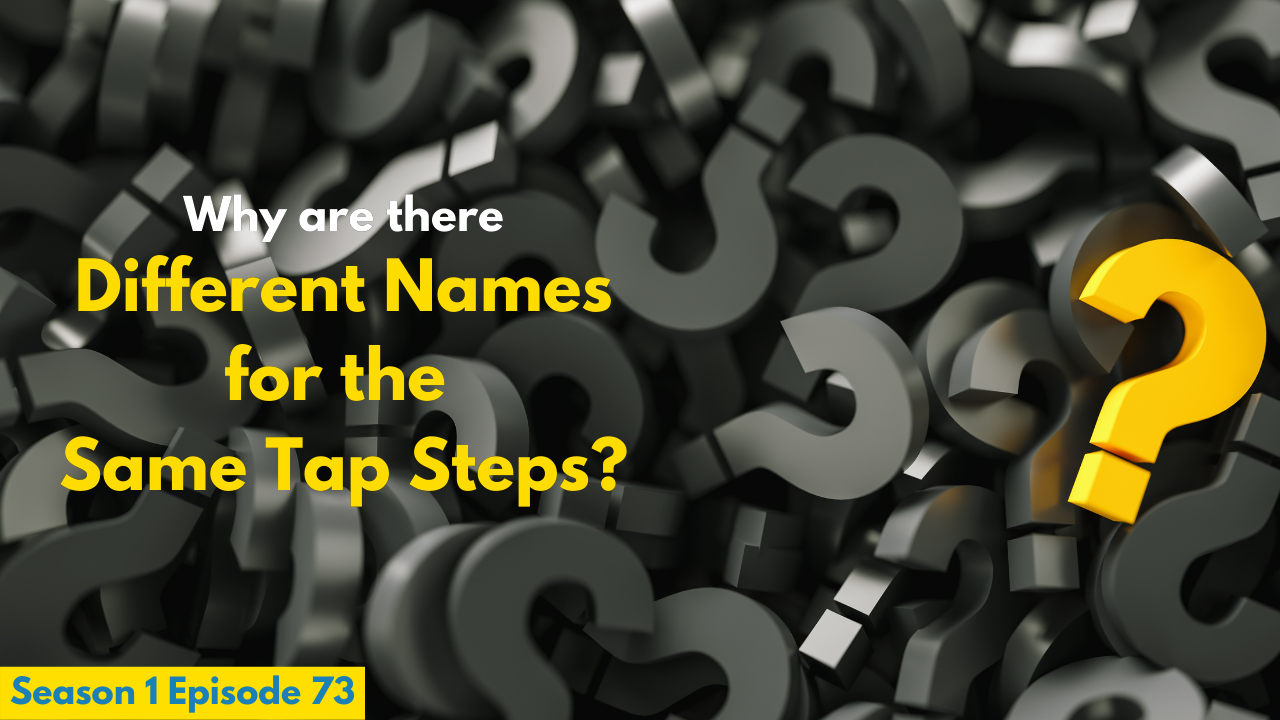Why are there different names for the SAME Tap step?

Published on November 19th 2020 by Hillary-Marie
Step… Stamp… Stomp…
Is it a toe? A knock? A dig? A toe drop?
So many names for the same exact steps, and it often changes depending on where you are in the world!
Today we’re talking about vocabulary inconsistency in tap dance. And in perfect timing too, because I’ve just recently launched my new course for iTapOnline™ Members called “Tap Dance 101”. This course is a quick review of basic fundamental tap dance vocabulary with some additional technique exercises and fun phrases. Tap Dance 101 is great for students who need a refresher after just getting back into tap dance, and for teachers who are seeking clarity on tap dance terminology and ways to introduce their students to this vocabulary.
And speaking of vocabulary, let’s talk about why we have so many different names for the same exact tap steps. I love talking about this because it brings us to the true roots and culture of tap dance.
Tap dance is a Black American art form born out of slavery. It’s an oral history, an oral tradition.
People have tried codifying tap dance over the years, attempting to build “the” syllabus or “the” tap dance dictionary that should be referenced for all things tap dance. And that always perplexes me a bit because to codify tap dance in such a formal way, it strips away a part of what makes tap dance tap dance, its culture, its oral history, its verbal tradition, its evolution.
But I also understand that when people attempt to do this, that they mean well, because they think to themselves, “tap dance should be as respected as an art form like ballet, and what ballet has, we should have too, they have a syllabus, we should have a syllabus”.
Why do they think this way? Because they want to offer a consistent tap dance education to everyone.
Consistency is why people go to Starbucks over the local coffee shop, because your caramel macchiato in New Jersey tastes exactly the same as your caramel macchiato in San Diego.
But I think that’s what’s so beautiful about tap dance… that your tap dance of New York has a different vibe compared to the tap dance of Chicago… the ingredients are the same, it’s filled with technique, musicality, history, culture, respect and love for the dance, but it’s got its own vibe. And that’s what makes tap dance, tap dance. That individual journey.
You can often tell where a tap dancer is from just by watching them dance. You can take a solid guess as to who their teachers were. How many other dance forms can you do that with? Surely some, but it’s a very unique characteristic to tap dance.
But what about step names? They are an important way of passing down our art form from generation to generation. The vocabulary IS important.
So I’ll tell you how I like to approach it…
When I teach my students steps, I tell them alllllllllllllllll the different names that there are for a step. I tell them, “this step, depending on where you are in the world, is called an Alexander, Broadway, Eleanor Powell, Shirley Template… etc” And I also teach them, “if you take class with another teacher who calls a step by a different name, don’t raise your hand and tell them they’re wrong, it just may be different where they’re from, have respect and be open to learning new things.”
However, I also teach them one very important rule, and that is…
“No making up step names.”
And that’s something I instill in iTap Teachers during iTapOnline™ Tap Teacher Training Program. My rule is simple: No making up names. No naming steps. No renaming steps.
Why?
Because everything that’s new is old, and everything that’s old is new, and I assure you, just when you think you’ve discovered a new step in tap dance, I’m sure I can dig up some black and white footage of someone, somewhere in the world, someone in the history of tap dance, doing that step.

